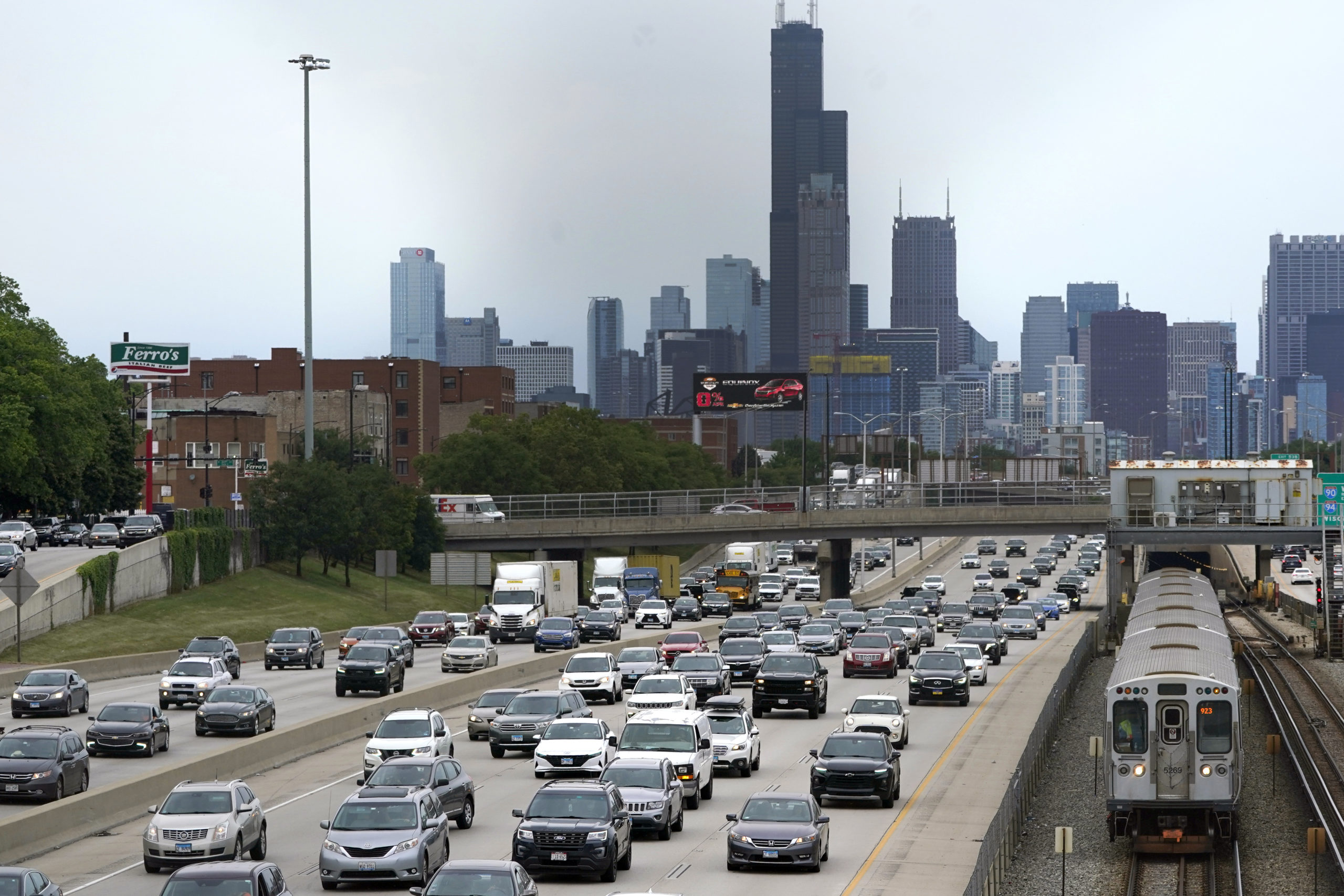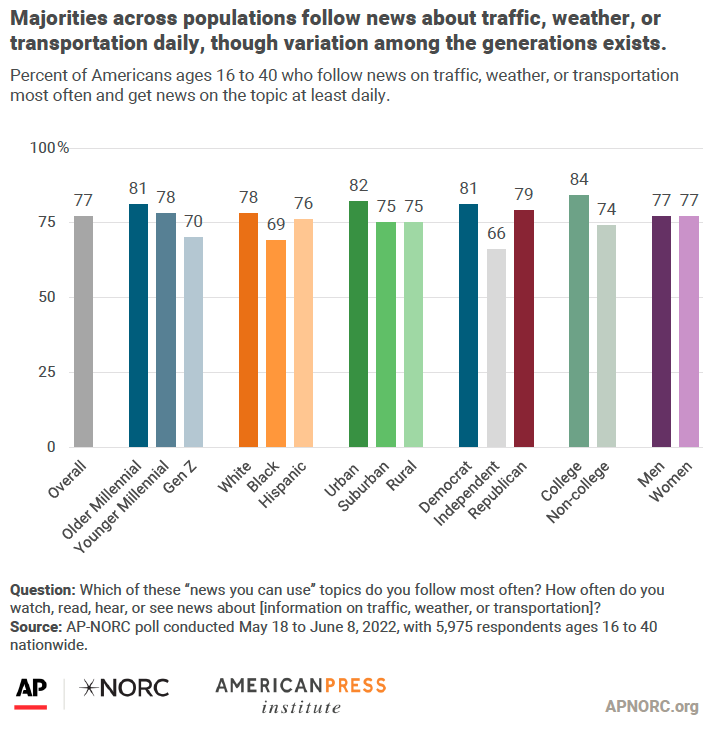News organizations, especially local ones, can play an important role in how people learn about tangible and everyday experiences in their community, whether that’s the weather forecast and local climate trends, traffic conditions, or if there are any problems with public transportation.
Who are the Americans ages 16 to 40 who are most closely following information on traffic, weather, or transportation, and how are they encountering it? Our Media Insight Project survey provides a landscape view of the 21% of Millennials and Gen Z who say they most closely follow information on traffic, weather, or transportation.
There is interest in information on traffic, weather, or transportation across Gen Z and Millennials regardless of age, gender, party identification, education, or community
There are no significant demographic differences among those who most often follow news and information on traffic, weather, or transportation. Gen Z and Millennials who say traffic, weather, or transportation is the “news you can use” topic they follow most often are like the overall Gen Z and Millennial distribution. In other words, there is no one segment within Gen Z or Millennials who drive interest in the topic.
Many Gen Z and Millennials who most often follow information related to traffic, weather, or transportation do so daily, though the frequency of consumption varies by age
Twenty-one percent of Gen Z and Millennials say information on traffic, weather, or transportation is the “news you can use” topic they follow most often, and among these, 77% do so at least daily. Majorities across race and ethnicity, geography, political identification, education, and gender report following this topic daily.
However, there is slight variation among the generations — older Millennials are more likely to watch, read, or see news about traffic, weather, or transportation each day compared with Gen Z.
Half of those who closely follow traffic, weather, or transportation information get news on it from Facebook
About half of Gen Z and Millennials who most often follow information about traffic, weather, or transportation use Facebook to get it, making it the leading social media platform for this topic.
YouTube and Twitter are the next most-popular platforms with about 1 in 10 Gen Z and Millennials using each for news about traffic, weather, or transportation.
Accounts from local TV stations and news organizations are the most sought out by close followers of weather, traffic, or transportation
Like the crime and public safety topic, social media accounts of local news organizations and TV stations are the most-common sources for Gen Z and Millennials who most closely follow information about traffic, weather, or transportation. About 1 in 10 also get this information from the social media accounts of national or local radio stations or media organizations that focus on a single topic, such as The Weather Channel.
Local TV is the predominant traditional source used for those closely following information about weather, traffic, or transportation
Traffic and weather are broadly local issues, and local TV dominates as the most popular traditional source for such news. Over a third of Gen Z and Millennials who most often follow news on traffic and weather get it from local TV stations, making it twice as popular as any other source. About 1 in 5 use search engines for this information while 1 in 10 use online aggregators, national TV, or radio stations. Only 3% report using local newspapers for information on weather, traffic, or transportation.
Continue reading: How the news topics Gen Z and Millennials follow relate to paying for and engaging with news
Share with your network
- Information on traffic, weather, or transportation
- How we explored the topics Gen Z and Millennials most closely follow
- Knowing the news: How Gen Z and Millennials get information on essential topics
- National politics or government
- Information related to COVID-19 such as the state of the pandemic, restrictions, or policies like mask and vaccine mandates
- How the news topics Gen Z and Millennials follow relate to paying for and engaging with news
- Information related to health or mental health
- Social issues such as abortion, gun policy, and LGBTQ issues
- Crime and public safety
- Study methodology
You also might be interested in:
Successfully and efficiently marketing your work can be hard, especially for local news teams with limited resources, but marketing yourself to your audience is an essential skill for news organizations to drive revenue and promote sustainability.
As news teams begin thinking about their election coverage plans, it may feel like adding more tasks to an already full plate, with a fraction of the staff and resources they once had. But that doesn’t have to mean figuring out how to do more with less — maybe it’s doing less with less.
We reached out to Danielle Coffey, the CEO of American Press Institute’s parent corporation, the News/Media Alliance, to learn more about the legal fight for news organizations’ rights with AI.








